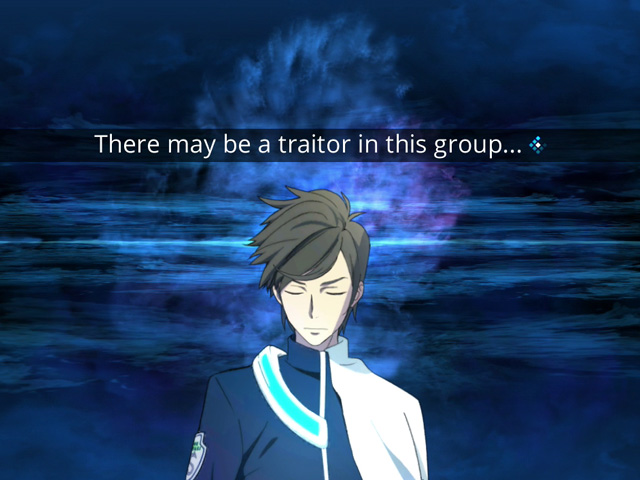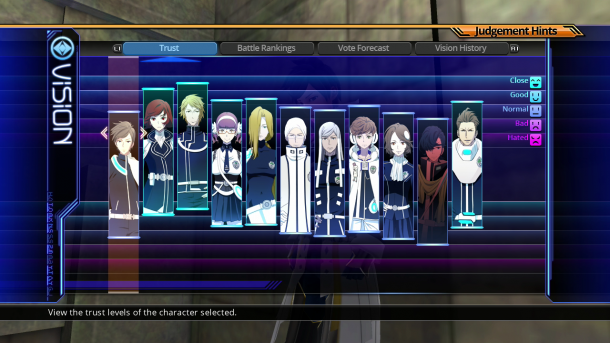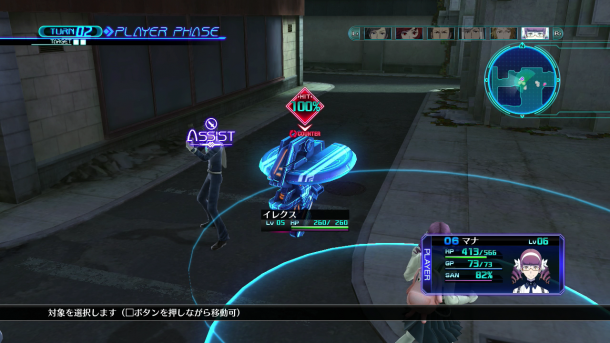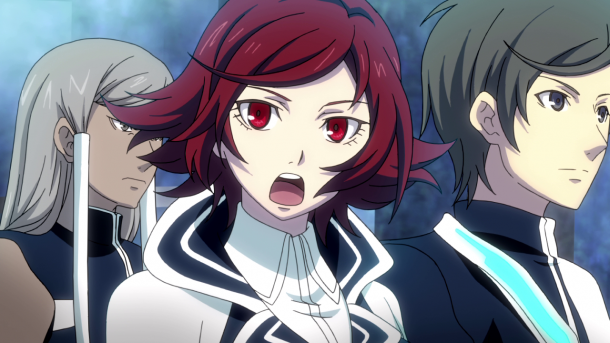Lost Dimension at face value is an average RPG. Anime inspired teenagers who have special abilities are on a quest to save the world with your help, however this facade hides the real truth. Quirky relationship building and interesting combat options lead to a lot of depth and nail-biting scenarios. But their are traitors amongst your team, looking to take advantage of your trust and devotion to achieve their selfish needs. Regrettably, depending on how things go, it can feel like the game is the one working against you.
Lost Dimension takes place in a tower created by The End, an evil sociopath who has set his sights on ending the world. A team of gifted youngsters is formed in hopes that they can use their unique abilities to enter the tower and bring him down before it’s too late. Once the team arrives, they find that their memories have been erased and are forced to rediscover themselves as they find ways to work together. The End makes this marginally more difficult by throwing a complication into the mix, telling the team that not everyone can be trusted and that there are traitors amongst their ranks. This is the crux of the narrative, and the driving force for all gameplay outside of combat.
The narrative is told through Sho, the unofficial leader of the group. Sho has Vision, a power which allows him to see the dynamics of relationships between characters and ultimately deduce who the traitors are. This allows players to influence the relationships of characters by choosing whom to converse with and who to feed information or lies. These conversations seem inconsequential at first since it seems everyone just wants to talk about not trusting each other, but after becoming close with characters you find out their backstories and how their powers have affected their lives. It brings to light how characters are coping with things, which really isn’t a topic covered much in games. Conversations affect the relationships Sho has with the others, but relationships within the group are mostly affected by combat scenarios.
Before combat, players choose which of the available characters to take into a fight. This can affect how characters view you if you’re deciding to leave them out of a majority of the fights. Combat is conducted through an enemy and a player phase. When it becomes the player’s turn, players can move each member of the team and take an action with them, like attacking or using an item. Based on their stats characters are allowed to move a certain amount of distance in any direction. Placement of characters is important when deciding how to move with each one. Putting characters closer together to attack an enemy will allow for characters to assist in the attack of an ally, but may prevent some from using area of effect attacks or allow enemies to damage multiple targets with their attack. Characters assisting others helps build up the relationships and trust between them.
When taking an action players can use a character’s special abilities, referred to as “Gifts.” Gifts are unique to each character and can be upgraded and learned throughout the game. Some gifts are offensive like Himeno’s fire based attacks, or defensive like Zenji’s link abilities that allow him to share stats and buffs across chained allies. When using gifts, characters spend a resource called sanity. If a character burns through all of their sanity, they will go into berserk mode and the player will lose control of it for two turns. This isn’t a bad thing if it’s planned for. When a character goes berserk they immediately return to full health and take an action. This can lead to strategies where a near death character can use their remaining sanity to get a new lease on life and take double actions against strong opponents.
The combat system is really where Lost Dimension gets things right. Even in failure it feels like you learn something about a member of your team or how the systems of the game can be manipulated in your favor. Unlike most RPGs it never feels like level grinding is the answer to solving a problem, just carefully studying the enemies in a scenario and adjusting character choice and placement will often solve it. It’s when players start getting comfortable with how to play that the game suggests finding new ways or ripping old ones away.
After every few levels, players must make the decision to eliminate one of their characters, hopefully choosing the traitor. Other than the first traitor in a player’s first playthrough, traitors are chosen at random. This offers a nice amount of replayability, but also indirectly may make a player never want to go back after finishing. Characters who you rely on in combat may be the traitor and the randomness has a chance of feeling like it’s targeting your enjoyment. The game does give players a large amount of help in finding out who each traitor is, but until you are able to truly grasp how to deduce who the traitor is mistakes will be made. The game chooses to punish you for these mistakes further down the road even after you have stopped making them.
Lost Dimension’s randomness is a weird balancing act that’s going to affect every player differently. It’s traitor system is certainly unique and offers variations to gameplay, but if a player lands on one of those variations that constantly shuts them down they may be spiteful of it. In terms of gameplay, Lost Dimension is one of the most enjoyable turn based RPGs I have played in years. It’s just odd to be punished in hour 30 for decisions made in hour 3.
This review is based on a Playstation 3 and Vita retail code provided to SideQuesting by the publisher





No Comments